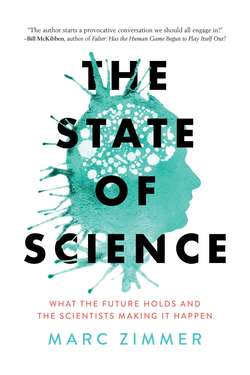Читать книгу The State of Science - Marc Zimmer - Страница 23
На сайте Литреса книга снята с продажи.
History of Amateur Scientists
ОглавлениеAmateur science has a storied past. Much of our early science was done by amateur scientists. Here I briefly introduce four of these pioneering amateurs—Michael Faraday, Charles Darwin, Henrietta Swan Leavitt, and Robert Evans—before turning to the new breed of amateur scientists we have come to know in modern science.
Michael Faraday, born in 1791 in Newington, England, had no formal education. He grew up poor and learned to read and write in Sunday school. At age 14 he was apprenticed to a bookbinder. Through reading in his spare time he taught himself about electricity and chemistry. When one of chemist Humphrey Davy’s assistants was dismissed for brawling in 1812, Faraday managed to get a position working for Davy at the Royal Institution of Great Britain. Though an amateur in the sense that he had no formal education, Faraday would become one of the greatest experimentalists of the 19th century. Among his many breakthroughs was the invention of the first electric motor and dynamo. He pioneered the field of electrochemistry and discovered diamagnetism and benzene. Some have gone so far as to suggest that Davy’s greatest contribution to science was his discovery of Faraday, even though Davy himself discovered five new elements.
Mary Ellen Hannibal, author of Citizen Scientist: Searching for Heroes and Hope in an Age of Extinction, describes Charles Darwin as the archetypical amateur scientist: “He did not have an advanced degree, and he worked for no one. He worked for himself—no institution.”[1] To be fair, he did have a rich father to support him. The days when amateur scientists such as Darwin and Faraday were revolutionizing science are probably over. However, one area in which amateurs have made and still are making substantial breakthroughs is astronomy.
Henrietta Swan Leavitt was an astronomer in the early 1900s. She was a Harvard “computer,” one of many women hired to examine the relative brightness of stars in thousands of photographic plates. The hours were long and the work tedious, and they were paid a pittance. Between 1907 and 1921, Leavitt discovered 2,400 variable stars. She didn’t just do tedious, repetitive work; she also discovered a relationship between the period of a star’s brightness cycle and its absolute magnitude that made it possible to calculate its distance from Earth.
The record for visual discoveries of supernovae is held by another amateur astronomer. Robert Evans was born in 1937; he is a minister of the Uniting Church by profession. He graduated from the University of Sydney, majoring in philosophy and modern history. Two of my favorite authors have discussed Evans’s talents. In An Anthropologist on Mars, Oliver Sacks describes Evans’s ability to find subtle changes in the starfield as “savantlike.”[2] In A Short History of Nearly Everything, Bill Bryson presents a great analogy for Evans’s ability to detect changes: it is like being able to spot an added grain of salt on a tabletop of salt.[3]
In 1992 Daniel Koshland Jr., the editor of Science magazine, published an editorial in which he argued that modern science “can no longer be done by gifted amateurs with a magnifying glass, copper wires, and jars filled with alcohol.”[4] To do modern science 1990s style, one needed high-tech equipment, significant funding, graduate and postdoc students, a lab, and a graduate degree in science. It seemed as if the days of the amateur scientist were over. However, Koshland was wrong. Amateur astronomers are still contributing important findings. In the 2010s, amateur astronomers have found 42 new planets, spotted a new dwarf galaxy, and sighted “yellow spaceballs that are a rare view of massive star formation[,] and in 2016 two amateur astronomers filmed an asteroid impacting Jupiter.”[5]
